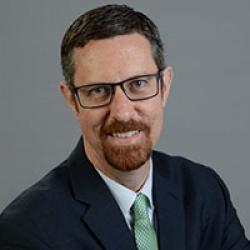Before COVID-19, the federal Health Resources and Services Administration estimated that the United States had a shortage of roughly 20,000 physicians, particularly in rural and underserved urban areas. (This is a conservative estimate, as it only covers primary care and psychiatry and not shortages in any other specialties.) The AAMC has projected that the existing shortage will get worse over the coming decades. The latest data from our annual report, The Complexities of Physician Supply and Demand: Projections from 2018-2033, projects a shortage of between 54,100 and 139,000 physicians by the year 2033.
Of course, these projections were developed pre-COVID-19, but they underscore twin realities of health care delivery both before the pandemic and now: The nation’s population is growing and aging, and much of the physician workforce is near retirement. The pandemic has intensified these shortages and left a disproportionate share of both patients and doctors at greater risk from a virus that is most deadly for its older victims. A third of the nation’s physicians are aged 60 or older, and well over half (57%) are over 50.
Our report further highlights that we face increasing shortages of physicians in both primary care and specialty care, including medical specialties like pulmonology, critical care, and infectious disease that are in such high demand right now. Specifically, we project a national shortfall of at least 21,400 primary care physicians, 9,300 medical specialists, 17,100 surgical specialists, and 17,100 physicians in “other specialties” such as anesthesiology, pathology, and neurology — all by 2033.
The pandemic has reminded us how our health care professionals need to work in teams, and that each profession needs to provide the highest level of care it can — to practice at the “top of its license.” The pandemic has also underscored how important telehealth is for access to health care, especially for vulnerable populations, and how well it can be used to provide all kinds of health care that many of us had not considered to be “telehealth-friendly” before now. To bolster these approaches to improving our health care in a time of crisis, federal and state governments have relaxed scope of practice restrictions, allowing critical health care providers such as physician assistants (PAs) and nurse practitioners (NPs) to contribute as much as they can. The Centers for Medicare & Medicaid Services has also recognized that it needs to reimburse telehealth care as health care, because it enables important assessments and medical decisions and also because we have demonstrated its importance to access. We can only hope that after this crisis has passed, these opportunities to advance care delivery will remain in place as enduring changes.
The pandemic has likewise underscored how important our physician workforce is and how we do not have enough physicians in the right specialties in the right places. We have been forced into extreme measures, going so far as to move physicians cross-country, recruit them out of retirement, or even — in some desperate instances — graduate medical students early. What we have not done is recognize in any formal way the underlying causes of our physician shortages. While we cannot do anything about an aging population, we can acknowledge that an aging population will increasingly need complex specialized care. We can also recognize that our physician workforce is aging and increasingly burnt out, and we can imagine that being on the front lines of this pandemic is likely to exacerbate that burnout and make early retirement more appealing. Just as we need to continue to allow PAs and NPs to do as much as they can and also continue to build better telehealth infrastructure and recognize it as full-fledged health care in how we deploy and reimburse it, we also need to acknowledge that we need to train more physicians.
To ensure that our nation has enough physicians, in 2006 the AAMC called for a 30% increase in medical school enrollment over 2002 levels. We have recently exceeded that figure, but the growth in medical school students at both MD and DO schools will not, in and of itself, guarantee us more doctors. To increase the numbers of new doctors entering practice every year in the United States, we need to increase the capacity of our graduate medical education system. And we need to make sure that we are training the kinds of physicians we need, not just today but also 10 and even 20 years from now, to meet the needs of an aging population and be ready for whatever else may come.

